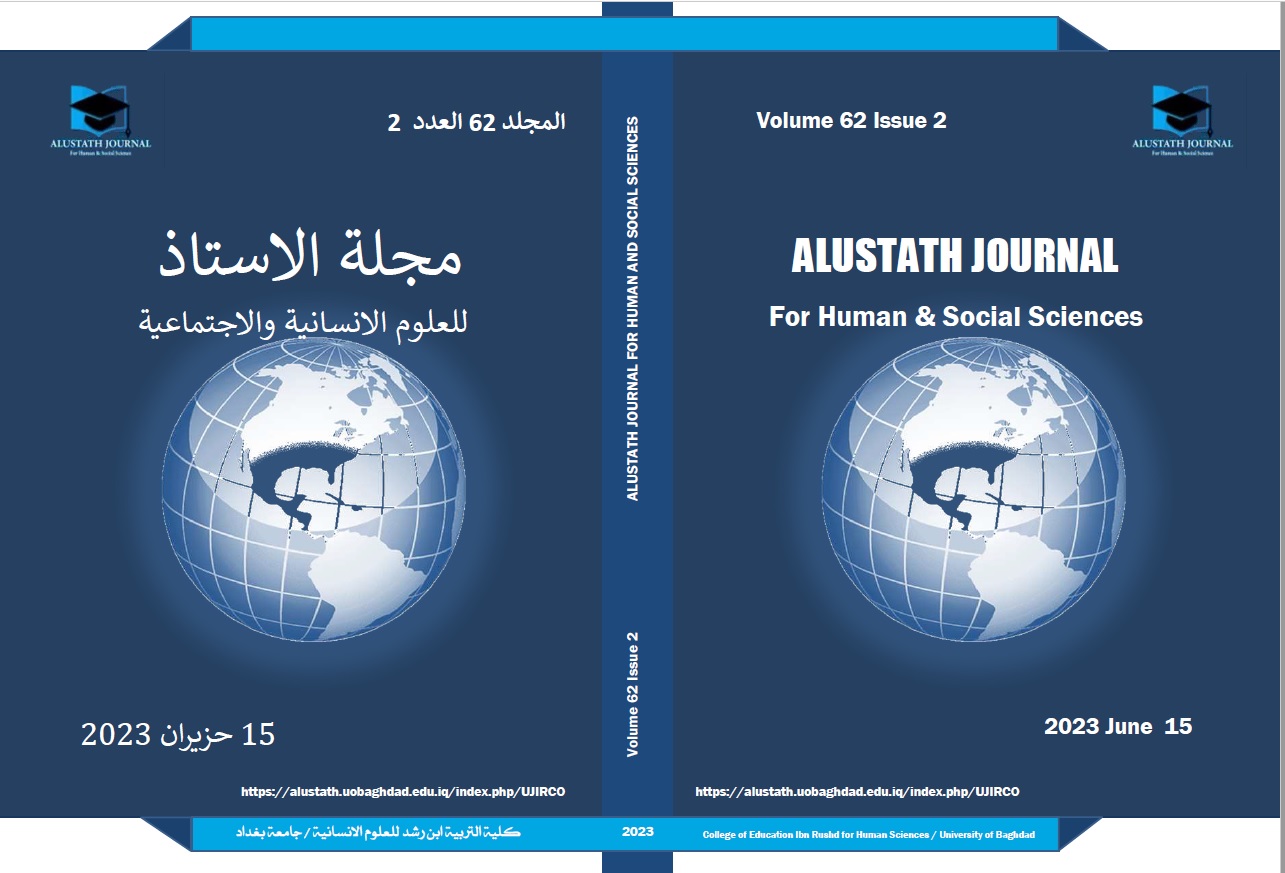Equivalence of 'Lamma' in the Holy Quran Translations
DOI:
https://doi.org/10.36473/ujhss.v62i2.2034Keywords:
Communicative & Semantic translations, Dynamic & Formal equivalences, Holy Quran translationAbstract
'Lamma' is chosen as an example of having or not equivalence or equivalences in four English translations of the H. Quran. Dealing with it semantically, 'Lamma' as an adverbial noun or a particle (conjunction) has certain meanings in Arabic grammar. It has more than one type that carries different meanings. Assessment of rendering 'lamma' relies on Nida's (1964) types of equivalences (formal and dynamic); both kinds are reflected in different terms by Newmark’s (1988) type of translations, i.e. semantic and communicative. The aim of the study is to investigate the translation of these types and to high light the differences in the translations as well as to detect the equivalences of 'lamma' in English.The research is trying to answer the following questions: Have the translators succeeded in rendering the grammatical meanings of 'lamma'? and how they tackle the difference in meanings. Are renderings of 'lamma' different from one translator to another; is that depends on time (old or modern), or culture (Muslim or Christian, Knowing Arabic (the source language) or not. Relatively speaking, translators have found a formal and dynamic equivalence of 'lamma' as far as the meaning is clear, as in the first type of 'lamma'. However, when the meaning of 'lamma' is not clear enough, as in the second and third type of 'lamma', the translators didn't grasp the whole meaning of 'lamma'. Moreover, rarely there are differences between the translators concerning their time and culture.
Downloads
References
• Abdul Razaaq, H.M. (1430 A.H./2009). "Lamma and its using locations in the Holy Quran"(pp165-190). Aadaab ar-Rafidain. No.54. Al-Mudiria al-Aama of Nainawaa Education [General Directorate of Naynawaa Education]:al-Mosul.
• Al-Antaki, M. (n.d.). Al-Minhaaj [the Curriculu]. 2nd ed. Maktabat al-Sharq [Liberary of the East] Halab:Syria.
• Al-Galaayni, M. (1421 A.H./2000). Jaami' al-Drus al-A'rabia [The Arabic Lessons Collector]. Part 3/ 1st ed. Daar al-Kutub al-Eilmia [The House of Scientific Books]. Bairut: Labnon.
• Al-Halawaani, M. Kh. & Badir al-Deen al-Haadhiri. (n.d.). Al-Munjid fi al-Ii'raab wa al-Balaaghat wa al-Ei'mlaa' [The Helping (Book)in Parsing, Rhetoric & Dictation]. 4th ed. Maktabat Daar al-Sharq [The Liberary of Daar al-Sharq] :Bairut.
• Al-Hilali, M. T., & M. M. Khan (trans.). 1417A.H.[1978] Translation of the Noble Qur'an in the English Language. Madinah: King Fahad Complex for the printing of the Holy Qur'an.
• Ali, S.V. (1988). The Holy Qur'an (1st ed., A. Mir, trans.). Osweh Printing & Publication Co. The Islamic Republic of Iran.
• Al-Mahaly, J.M. & Jalalul Deen A. al-Suty. (1409 A.H./1988). Tafseer al-Jalaalayn [al-Jalaalayn Interpretation (of the Holy Quran)]. 2nd ed. Daar Ibn Kuthair:Damascus.
• Al-Sulaimaan, Misbon M. D. & M. Khoshaba. Translation Revisited: a New Approach. International Journal of English Literature and Social Sciences (IJELS), 3(5), (pp.761-767) https://dx.doi.org/10.22161/ijel.3.5.11
• Arberry, A. J. (tran.). The Koran Interpreted. 2 Vols. (1980). London: George Allen & Unwin.
• At-Tabtaba'i, M. H. (1424 A.H.). Mukhtasar Tafseer al-Mizaan [Brief [Quran] Interpretation of the Balance]. Prepared by Kamaal Mustafaa Shaakir. Thawi al-Qurbaa for printing & publication.
• Az-Zamakhshari, Jadullah Mahmood bin Omar. (1995). Al-Kashaf a'n Haqaa'q Ghawamid al-Tanzil wa Eyun al-Aqaaweel fi Wujuh al-Ta'weel [The Clarification of the Quran Mysterious Facts & the most Famous Sayings in Forms of Interpretation]. 5 Vol.s. Bairut: Daar al-Kutub al-Ilmiyah (the House of Scientifis Books).
• Hornby, A.S. (1995 ). Oxford Advanced Learner's Dictionary. Oxford: Oxford University Press.
• http://www.hodaalquran/booksphp?sec=11&mn=1
• Irving, T. B. (2003). (A. Ali, trans.). The Qur'an Text, Translation and Commentary. Suhrawardi Research & Publication Center. Tehran-Iran.
• Kenny, D. (2013. “Equivalence”. In M. Baker (Ed.), Routledge Encyclopedia of Translation Studies (pp.96-99). Academy Publisher.
• Laver, J., & Ian, M. (n.d.). a Dictionary of Translation and Interpreting. www.academia.com
• Ma'ruf, Naayf. (1431 A.H./2010). Al-Mu'jam Al-Wasit fi al-Ii'raab [Arabic Intermediate Dictionary in Parsing]. 4th ed. Reviewing by Mustafaa al-Jawzi. Daar an-Nafaa's for printing & publication.
• Panou, D. (2013). Equivalence in Translation Theories: a Critical Evaluation. Theory and Practice in Language Studies, Vol.3, No.1, pp.1-6. Doi:10.4304/tpls.3.1.1-6. Academy Publisher. Doi:10.4304/tpls.3.1.1-6
• Salih, N.A. (2014). [Kinds of Lamma and its Meaning in the Holy Quran on the Light of al-Kashaaf Interpretation (of Quran) by az-Zamakhshari]. Diraasaat fi E'lum al-Shari'a wa al-Qaanun (Studies of Sciences of [Islamic] legislation and Law). Vol.41, appendix 3. The Deanship of Scientific Research: Jorden University.
• Wright, W. (1996). A Grammar of the Arabic Language (2 Vols., 3rd ed.) Librairie du Lebanon: Beirut.












